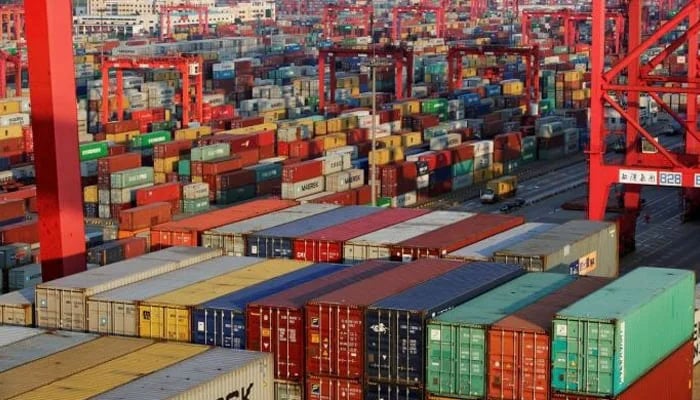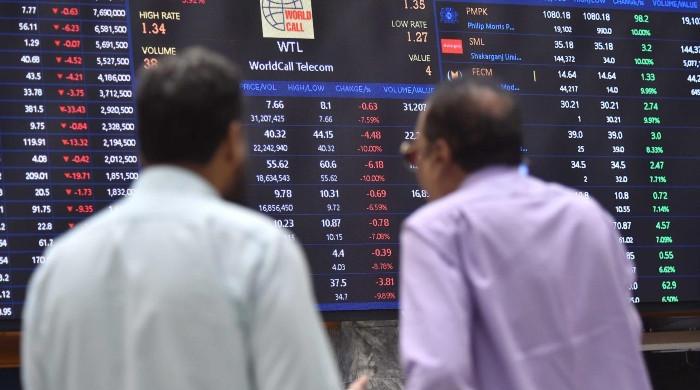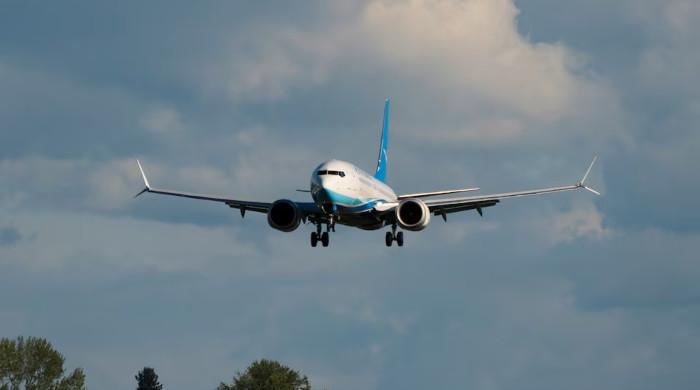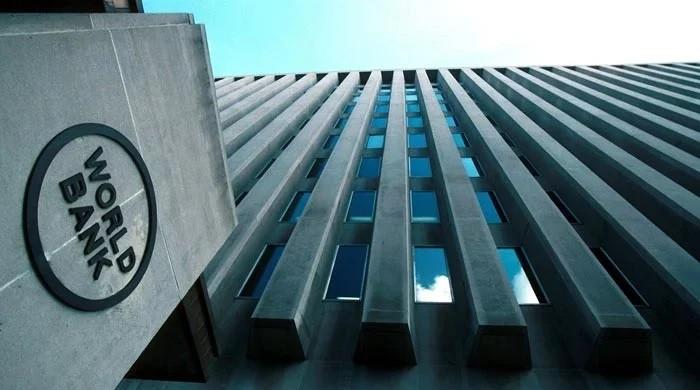Current account deficit narrows by 91% as remittances, exports outrun imports
Exports increased by 21% year-on-year to $2.762 billion while total imports fell by 7% to $4.346 billion
November 21, 2023

- Exports increase by 21% year-on-year in October.
- Deficit drops to $74 million in same month.
- Overseas Pakistanis sent $2.463bn in remittances.
KARACHI: Pakistan's current account deficit declined by 91% in October from a year ago, as remittances from overseas Pakistanis, lower imports and improved exports boosted the country's external balance, The News reported Tuesday citing the State Bank of Pakistan (SBP) data.
As per the data, the country's deficit dropped to $74 million in October as the exports increased by 21% year-on-year to $2.762 billion while its total imports fell by 7% to $4.346 billion.
Pakistanis working abroad sent home $2.463 billion in remittances in October, rising by 10%.
On a month-on-month basis, however, the current account deficit increased by 61% in October compared to the previous month, mainly due to a wider trade gap caused by a surge in imports.
Even though October's deficit was higher than in September, which was 46%, analysts noted that this was the second consecutive month that the current account balance was almost at breakeven.
In October, the country’s imports increased by 9%. The volatility of international oil prices amid the Middle East conflict seemed to have led to a rise in Pakistan’s import bill. The slight increase in imports also reflects a recovery in the aggregate demand in the country’s economy.
The country’s goods exports rose by 12% and remittances increased by 12% month-on-month in October. Pakistan's current account deficit declined by 66% to $1.1 billion in the first four months (July-October) of the current fiscal year. This was mainly due to the government’s policy of keeping the trade deficit and, consequently, the current account deficit at a sustainable level in the face of low foreign exchange reserves.
Analysts predict that this fiscal year’s deficit will be manageable because planned foreign inflows are likely to materialise. According to economist and analyst Sana Tawfik of Arif Habib Limited, the current account deficit is expected to be around $4.1 billion in FY2024.
“Given that expected financing from bilateral and multilateral partners would support the nation's foreign exchange reserves, the deficit appears to be sustainable,” Tawfik said.
“Furthermore, in the following months, it was expected that the government would stick to its policy of prioritising imports of necessities over all other goods, especially non-essential ones. It is unlikely that the government will fully permit imports of non-essential items until the reserves position improves.”
Last week, the International Monetary Fund (IMF) staff and the Pakistani authorities reached a staff-level agreement on the first review under Pakistan’s stand-by arrangement (SBA) that was subject to approval by the IMF’s executive board.
Upon approval, the country is set to get approximately $700 million, bringing the total disbursements under the SBA to nearly $1.9 billion. As of November 10, Pakistan had $12.5 billion in foreign exchange reserves, up from $8.5 billion in May.
It is projected that Pakistan will get approximately $1.2 billion in financing from the World Bank, Asian Development Bank, and Asian Infrastructure Investment Bank before the end of the year. The government also expects more inflows from Saudi Arabia and the United Arab Emirates to support the country’s economy.











